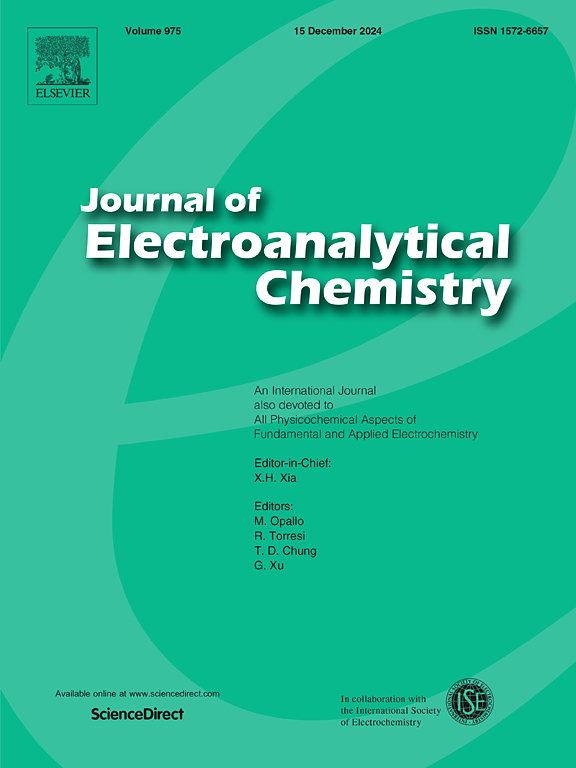Amorphous-adjustable fluorinated Ni-based MOFs for enhanced alkaline oxygen evolution
IF 4.1
3区 化学
Q1 CHEMISTRY, ANALYTICAL
引用次数: 0
Abstract
Crystalline-amorphous hybrid materials possess the benefits of both crystalline and amorphous phases. Nevertheless, the successful incorporation of amorphous structural units into ordered crystalline materials and the exact regulation of interface electrical effects continue to pose a considerable challenge. Herein, we successfully incorporate disordered amorphous structural units onto ordered Ni-based MOFs to enhance the performance of alkaline oxygen evolution reaction by simply adjusting the proportion of organic ligands. The obtained series of fluorinated Ni-based MOFs (xF-N-MOFs, x = 0, 1/8, 1/2, and 1/4) exhibits adjustable amorphous units from 65.89 % to 82.1 %. XPS fine analysis reveals that its electrons are enriched on the crystalline-amorphous interface of Ni-based MOFs, resulting in regulating the kinetics of reaction intermediates and achieving higher electron storage. Accordingly, the optimized 1/8F-Ni-MOF exhibited a remarkably low overpotential of 291 mV at 100 mA·cm−2, which was 115 mV lower than that of Ni-MOF nanosheets. This work provides valuable insights into comprehending the influence of interactions between crystalline and amorphous states on electrocatalyst performance.

用于增强碱性析氧的非晶可调氟化镍基mof
晶态-非晶态杂化材料具有晶态和非晶态的优点。然而,将非晶结构单元成功地整合到有序的晶体材料中,以及界面电效应的精确调节仍然是一个相当大的挑战。本文通过调整有机配体的比例,成功地将无序非晶结构单元整合到有序的ni基mof上,从而提高了碱性出氧反应的性能。所获得的一系列氟化镍基mof (xf - n - mof, x = 0, 1/8, 1/2和1/4)具有可调的非晶单位,从65.89%到82.1%。XPS精细分析表明,其电子富集在ni基mof的晶态-非晶态界面上,从而调节了反应中间体的动力学,实现了更高的电子存储。因此,优化后的1/8F-Ni-MOF在100 mA·cm−2下的过电位为291 mV,比Ni-MOF纳米片低115 mV。这项工作为理解晶体和非晶态之间的相互作用对电催化剂性能的影响提供了有价值的见解。
本文章由计算机程序翻译,如有差异,请以英文原文为准。
求助全文
约1分钟内获得全文
求助全文
来源期刊
CiteScore
7.80
自引率
6.70%
发文量
912
审稿时长
2.4 months
期刊介绍:
The Journal of Electroanalytical Chemistry is the foremost international journal devoted to the interdisciplinary subject of electrochemistry in all its aspects, theoretical as well as applied.
Electrochemistry is a wide ranging area that is in a state of continuous evolution. Rather than compiling a long list of topics covered by the Journal, the editors would like to draw particular attention to the key issues of novelty, topicality and quality. Papers should present new and interesting electrochemical science in a way that is accessible to the reader. The presentation and discussion should be at a level that is consistent with the international status of the Journal. Reports describing the application of well-established techniques to problems that are essentially technical will not be accepted. Similarly, papers that report observations but fail to provide adequate interpretation will be rejected by the Editors. Papers dealing with technical electrochemistry should be submitted to other specialist journals unless the authors can show that their work provides substantially new insights into electrochemical processes.

 求助内容:
求助内容: 应助结果提醒方式:
应助结果提醒方式:


